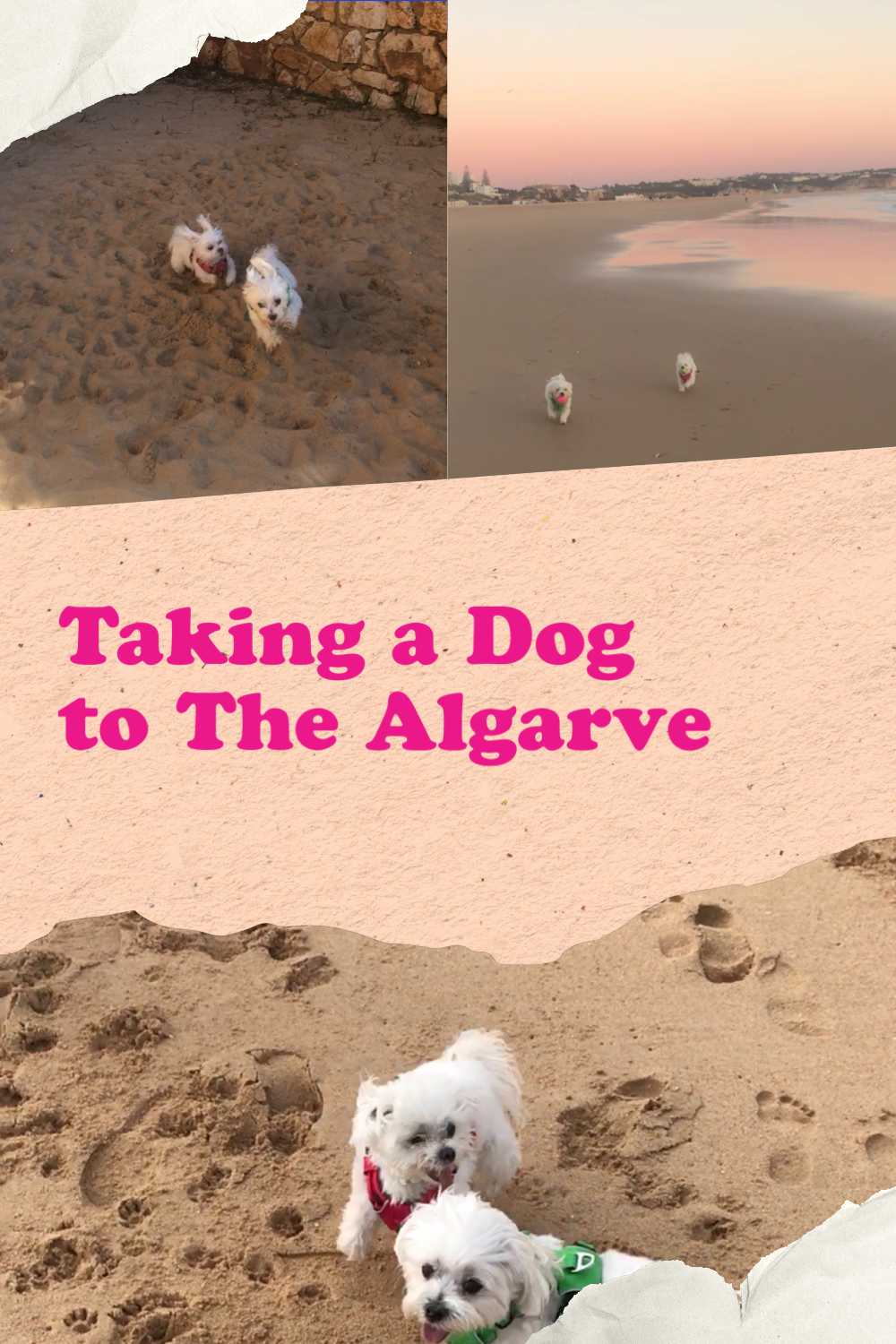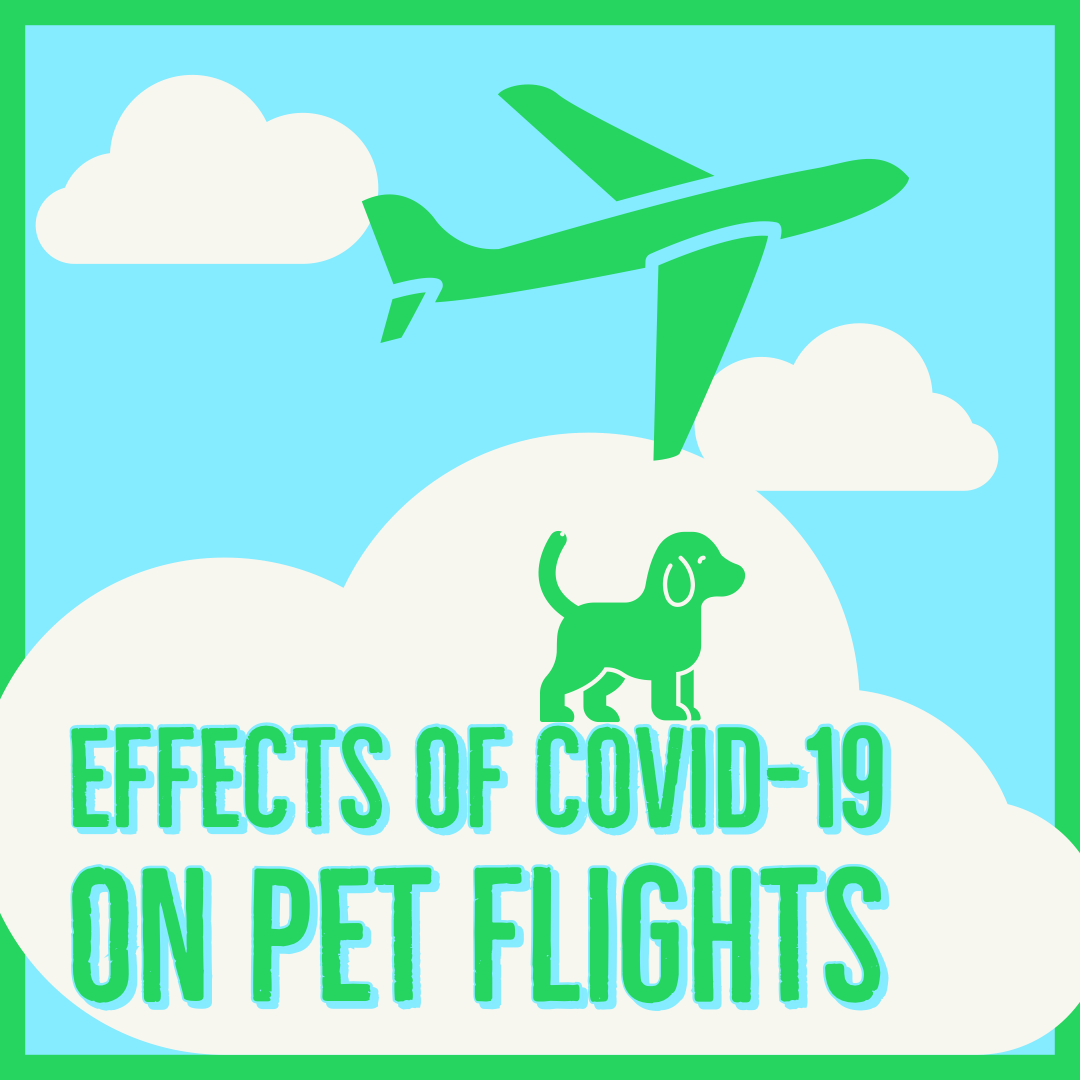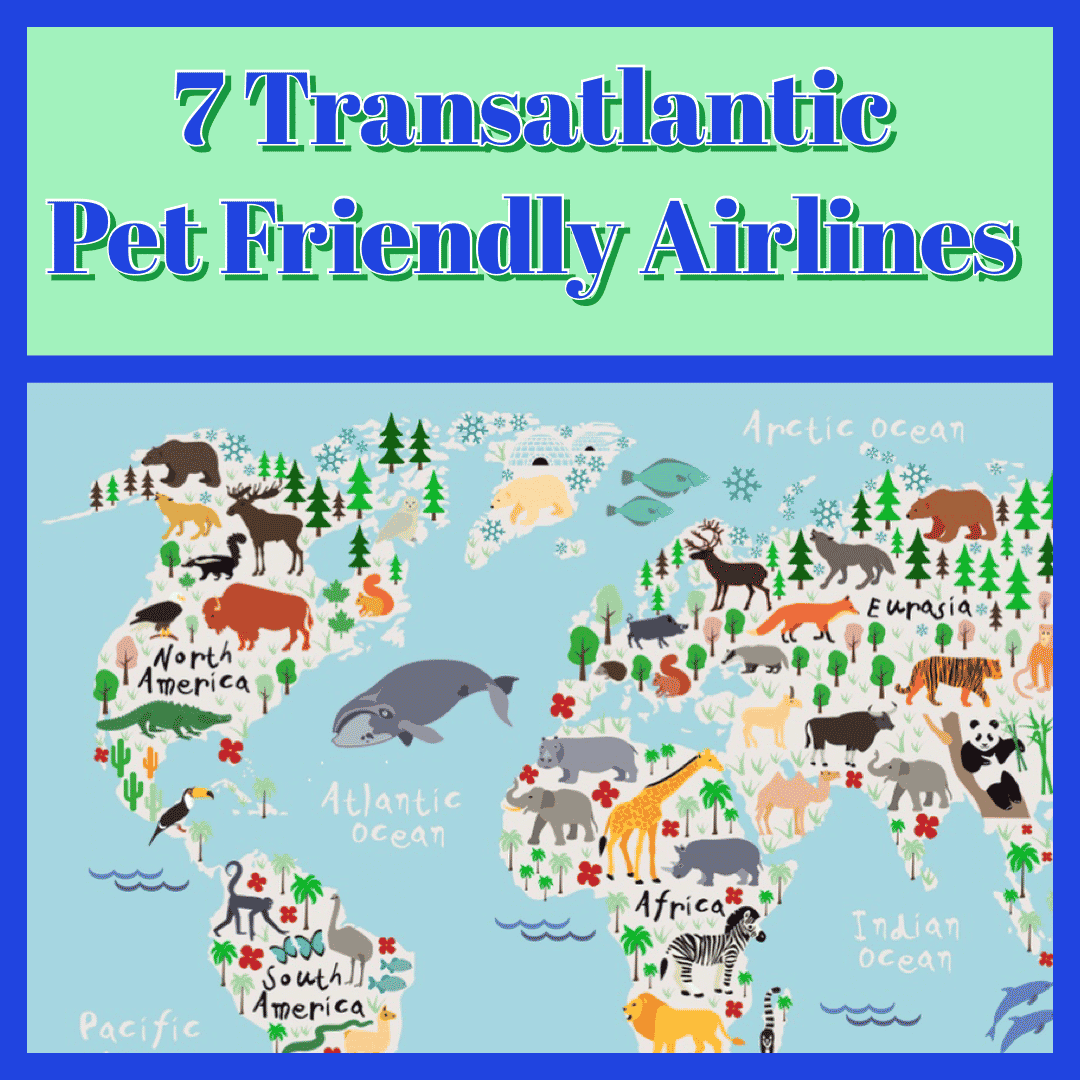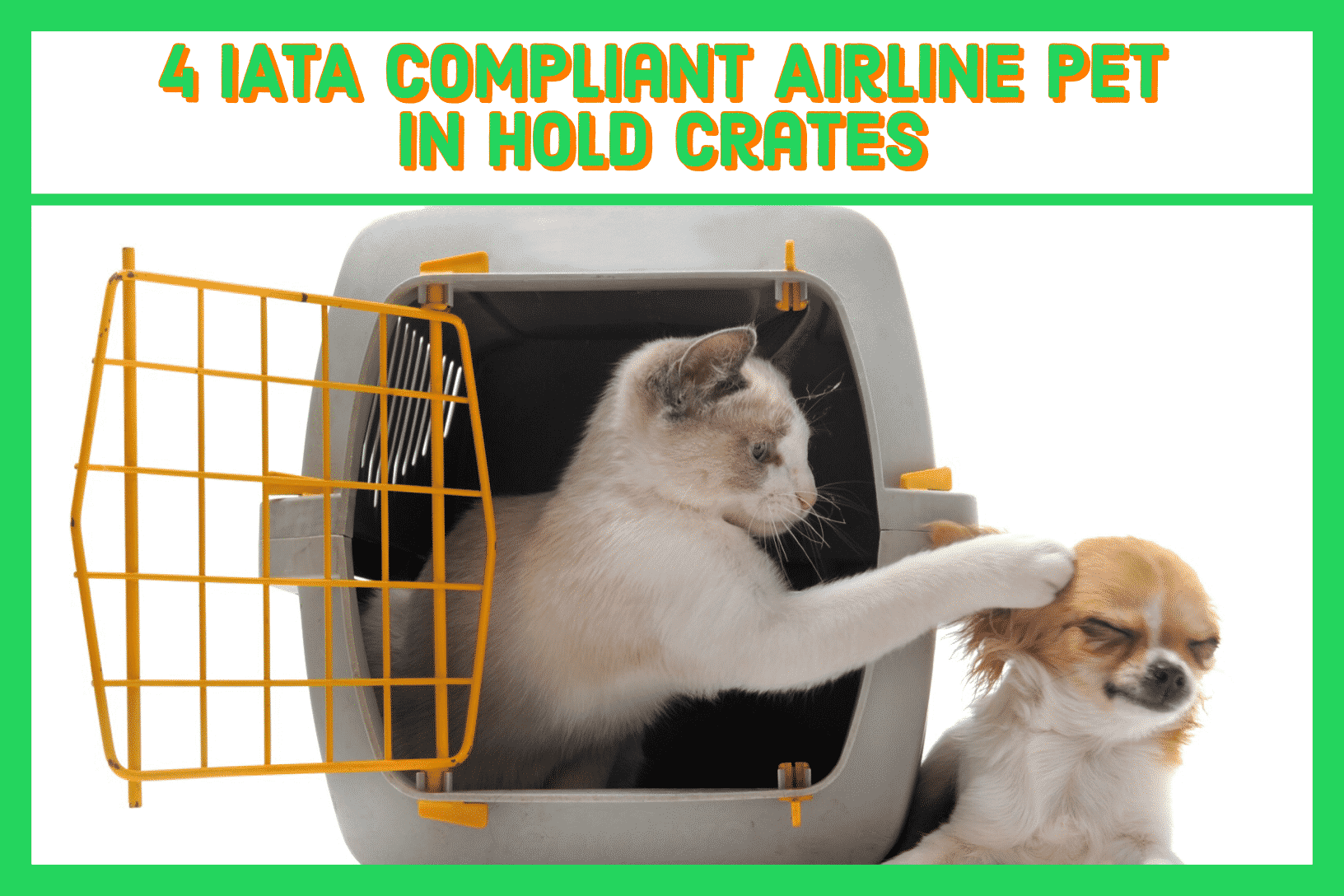Sandflies in warm climates can carry the Leishmania parasite, which may result in a dog developing Leishmaniasis if bitten by an infected female phlebotomine sandlfy. A sandfly repelling dog collar, such as the Scalibor Dog Protection Band is the first line of defence against Leishmaniasis. You can also use a Seresto Dog Collar which, whilst doesn’t prevent sandflies from biting your dog, is now fully licensed to reduce the risk of Leishmaniasis. In addition, it’s advisable to give your dog a daily dose of Leisguard Syrup during specific months of the year to protect them from Leishmaniasis caused by sandfly bites. So, if you’re taking your dog from an area with zero sandfly presence, such as the UK, Leisguard Syrup is highly recommended when you travel to warm countries during the infectious season. When travelling with your dog from locations with no sandfly presence, such as the UK, you can purchase Leisguard Syrup from a local vet in your holiday destination. A Canine Leishmaniasis Vaccination is also now available which may be used instead of Leisguard Syrup. At the moment there’s no medication, vaccine or treatment that stops dogs from catching Leishmaniasis, therefore vets highly recommend a multimodal approach. It’s therefore advisable to use a Scalibor or Seresto sandfly dog collar, together with Leisguard Syrup (Leishguard) or the Leishmaniasis Vaccination. Keep reading to find out all about Leisguard Syrup for pet travel safety against sandflies and Leishmaniasis disease.
Submit your review | |
1 2 3 4 5 | |
Submit Cancel | |

Estimated reading time: 7 minutes
Table of contents
Why do I Have to Protect my Dog from Sandflies?
Sandflies carry the deadly Leishmania parasite, which causes Canine Leishmaniasis in dogs. The Leishmania Infantum parasite is transferred to mammals, including cats, dogs and humans, through a bite from an infected female sandfly (phlebotimine). Only the female Phlebotomine feeds on mammals, and does so in order to produce eggs. As all creatures have the instinct to reproduce, female sandflies carrying the Leishmania parasite in warm countries have caused Leishmaniasis to be endemic in dogs. This is the case in southern European countries such as Portugal and Spain.
Cats can also develop Leishmaniasis if they’re a blood meal for an infected sandfly. However, the severity of Feline Leishmaniasis tends to be far less significant than in their canine counterparts.
What is Canine Leishmaniasis?
When a female sandfly carrying the Leishmania parasite bites a mammal, they transfer Leishmania promastigotes to the host. Inside the host, whether that be a cat, dog or other mammal, the Leishmania promastigotes are transformed inside macrophages, into Leishmania amastigotes. These amastigotes then divide and multiply in the cells and tissue of the host. At this stage, the mammal host develops Leishmaniasis disease.
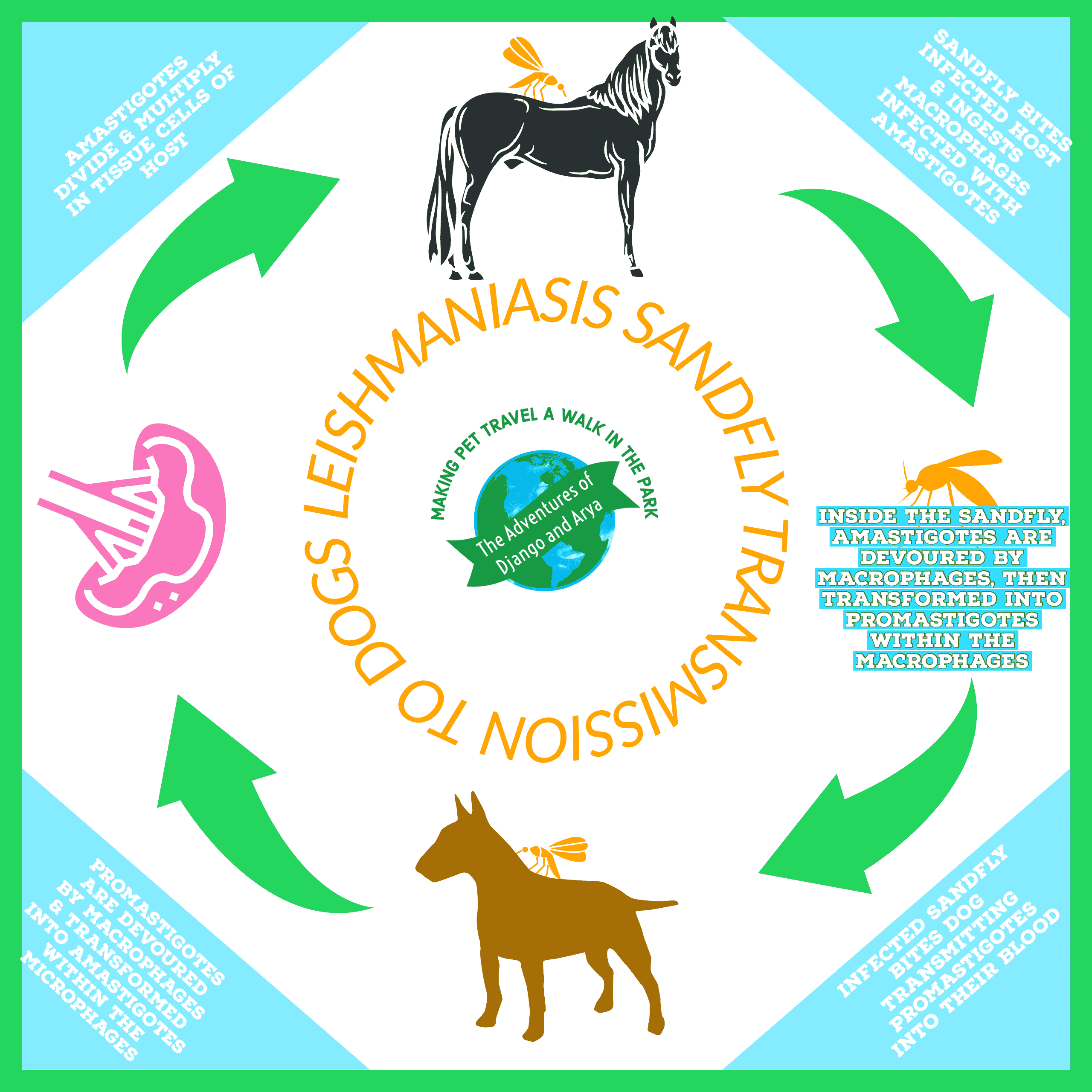
If your cat or dog develops Leishmaniasis after being bitten by an infected sandfly, there are some outward symptoms that may appear. These include:
- Lack of energy
- Loss of appetite
- Nose bleeds
- Vomiting
- Diarrhea
Severe symptoms of Leishmaniasis disease manifest in the cutaneous (skin) and visceral (internal) organs. In dogs, this may result in:
Cutaneous Symptoms
- Alopecia
- Leishmaniasis skin lesions
- Ulcerative or exfoliative dermatitis
Visceral Symptoms
- Epistaxis (nose bleeds)
- Kidney failure resulting in increased urination and drinking
- Ocular signs
- Progressive loss of weight with decreased appetite
- Swollen lymph nodes
- Organ Failure
- Mild Heart Attack
It’s important to be aware that Leishmaniasis is a serious zoonotic disease that can be fatal when left un-treated.
If untreated, Canine Leishmaniasis can result in the death of an infected dog within 12 months, usually due to kidney failure.
How Can I Keep my Dog Safe from Sandflies when We Travel?
The only effective prevention of Canine or Feline Leishmaniasis is to avoid sandflies, but this isn’t always possible when you travel with your cat or dog. However, sandfly repelling collars, such as the Scalibor Dog Protection Band have been scientifically proven to keep sandflies, and subsequently Leishmaniasis, at bay.
Here in Portugal, where Leishmaniasis is endemic in dogs, our veterinarians recommend using both a sandfly repellant collar, together with Leishguard Syrup.
How does Leisguard Syrup Protect Dogs from Leishmaniasis?
The active ingredient in Leisguard Syrup (Leishguard) for dogs is Domperidone, which reduces the risk of dogs developing an active infection and clinical disease. Domperidone is actually an anti-sickness medication, but in the case of Canine Leishmaniasis it increases the immune response to the infection. A bit like the COVID-19 vaccination, it trains your dog’s immune system to respond to the Leishmania parasite.
Leisguard Syrup has two purposes:
- To reduce the risk of dogs developing an active infection or clinical disease of Leishmaniasis.
- At early stages of the disease, to control the clinical progression of Leishmaniasis.
When using Leisguard in conjunction with a sandfly repelling collar, you have a highly effective prevention method for your dog.
When to Give your Dog Leisguard
Always check with a vet in the area you’re travelling to, as they can advise based on the local situation with sandflies and Leishmaniasis. However, if you’re in the UK, Northern Europe or anywhere else in the world for that matter, your vet should be able to obtain appropriate information on Leisguard Syrup usage for the destination country.
Here in Portugal, we give our three dogs Leisguard in June and October. However, in areas with a long infectious season for sandflies carrying the Leishmania parasite, it’s advisable to give to dogs every 3 months. A local vet can advise exactly when Leisguard Syrup should be administered to your dog to protect them from Leishmaniasis from sandflies.
In low prevalence areas, one treatment period at the beginning of the infective season and another
treatment shortly after the end is usually sufficient. However, the decision should be made by a knowledgeable vet in accordance with the local incidence of the disease and presence of the infective sandflies.
You can read more about sandflies in our detailed post about the threats they carry to pets and humans.
Dosage and Usage of Leisguard 60 ml
The dosage of Leishguard for dogs is based on your pets weight. One millilitre of Leisguard Syrup is administered for every 10kg.
So a 20kg dog would receive 2ml daily, a 5kg dog 0.5ml and so on. One bottle of Leisguard Syrup 60ml will therefore last a full year for a 10 kg dog receiving 1 ml daily during June and October. Each bottle of Leisguard costs around €25.
The product can be administered directly into your dog’s mouth using the syringe provided, or mixed with their food. To ensure correct dosage, body weight should be determined as accurately as possible.
Where Can I Purchase Leisguard Syrup for Dogs?
If you’re travelling from a location with no sandfly presence, such as the UK, to a country with the threat of Leishmaniais, you can purchase Leisguard Syrup 60 ml online before you travel with your dog. But, you can also obtain this from local vets in locations with a Leishmaniasis threat from sandflies, such as Portugal, Spain, Greece, France and Italy. Your UK vet should also be able to order the treatment for you if you’d prefer to have it in your hands before you travel.
We ordered ours from an online EU pet store prior to relocating to Portugal with our dogs. But, due to Brexit, this now incurs customs charges, so it’s more cost effective to buy it once you arrive in your destination.
Remember if you’re also using a sandfly collar such as the Scalibor Dog Protection Band, to purchase this in advance. The Scalibor Collar must be out of the packet for one week before it becomes effective against sandflies, ticks, fleas and mosquitoes.
You can also opt for the annual Leishmaniasis Vaccine to protect your dog from sandflies, which may be more convenient that administering the Leishguard treatment daily on specific months of the year.
No matter where you travel with your cat or dog, remember to leave a review on our site to let other pet owners know what you think about the pet-friendliness of your destination!
